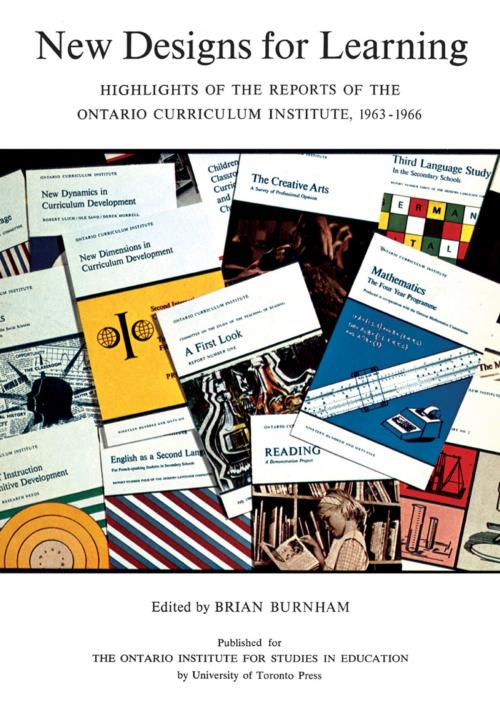New Designs for Learning
Highlights of the Reports of the Ontario Curriculum Institute, 1963-1966
Nonfiction, Reference & Language, Education & Teaching, Educational Theory, Educational Reform, Teaching, Teaching Methods| Author: | ISBN: | 9781442651104 | |
| Publisher: | University of Toronto Press, Scholarly Publishing Division | Publication: | December 15, 1967 |
| Imprint: | Language: | English |
| Author: | |
| ISBN: | 9781442651104 |
| Publisher: | University of Toronto Press, Scholarly Publishing Division |
| Publication: | December 15, 1967 |
| Imprint: | |
| Language: | English |
The last twenty-five years have seen unprecedented growth in the application of science in critical areas of human endeavor. Explosive acceleration in the rate of growth of learning has created unquestioned benefits but it has also served as a catalyst for social, economic, and political changes of a disturbing nature. Too often there has not been time enough to assimilate the new learning or to reach agreement on the use of powerful new technologies.
How have educators responded to the need to prepare young people to live with, create, and control change? In Ontario the response was unique and dramatic. Teachers and academics, school trustees, administrators, and inspectors as well as the provincial government and private philanthropy came together to create the Ontario Curriculum Institute, chartered as a non-profit organization in January 1963. Its objectives were to study all phases of the curriculum in the schools and universities of Ontario and to disseminate the results of their research and developmental work. Studies of course content, of learning processes and instructional methodology, of school and classroom organization were launched and new learning resources, experimental programs, and demonstration classrooms were designed and executed. Findings filled seventeen small volumes to September 1966 after which the reports of the study committees were issued by the Ontario Institute for Studies in Education with which the Curriculum Institute had merged.
In New Designs for Learning (which can be considered a sequel to Design for Learning, edited by Northrop Frye, University of Toronto Press, 1962) extracts from all seventeen reports, many now out-of-print, have been organized to deal with the most pressing and interesting aspects of educational reform. Selections were also chosen to provide for educator and layman alike the broadest possible grounds for assessment of the Institute’s work. Discerning introductions which set the book and its individual chapters clearly in the mainstream of the curriculum reform movement have been provided by the editor.
The last twenty-five years have seen unprecedented growth in the application of science in critical areas of human endeavor. Explosive acceleration in the rate of growth of learning has created unquestioned benefits but it has also served as a catalyst for social, economic, and political changes of a disturbing nature. Too often there has not been time enough to assimilate the new learning or to reach agreement on the use of powerful new technologies.
How have educators responded to the need to prepare young people to live with, create, and control change? In Ontario the response was unique and dramatic. Teachers and academics, school trustees, administrators, and inspectors as well as the provincial government and private philanthropy came together to create the Ontario Curriculum Institute, chartered as a non-profit organization in January 1963. Its objectives were to study all phases of the curriculum in the schools and universities of Ontario and to disseminate the results of their research and developmental work. Studies of course content, of learning processes and instructional methodology, of school and classroom organization were launched and new learning resources, experimental programs, and demonstration classrooms were designed and executed. Findings filled seventeen small volumes to September 1966 after which the reports of the study committees were issued by the Ontario Institute for Studies in Education with which the Curriculum Institute had merged.
In New Designs for Learning (which can be considered a sequel to Design for Learning, edited by Northrop Frye, University of Toronto Press, 1962) extracts from all seventeen reports, many now out-of-print, have been organized to deal with the most pressing and interesting aspects of educational reform. Selections were also chosen to provide for educator and layman alike the broadest possible grounds for assessment of the Institute’s work. Discerning introductions which set the book and its individual chapters clearly in the mainstream of the curriculum reform movement have been provided by the editor.















